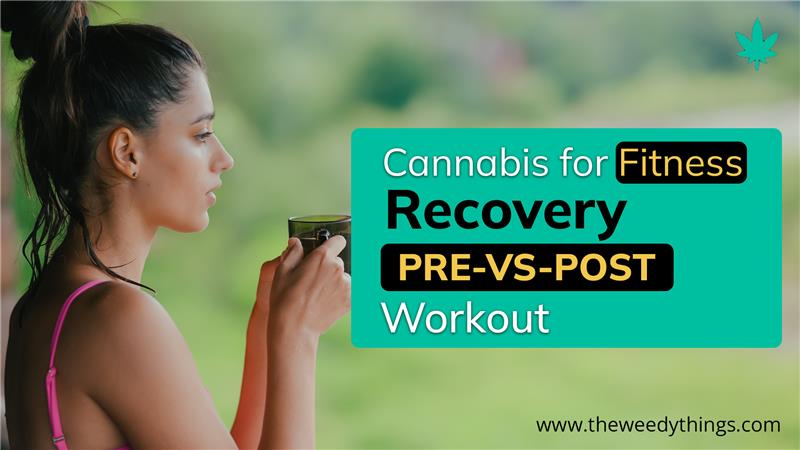For many, cannabis and fitness might seem like an unlikely pairing. But more and more athletes and fitness enthusiasts are turning to cannabis — both THC and CBD — to enhance their workouts, aid recovery, and improve overall performance.
So, should you use cannabis before or after a workout? And what are the benefits and drawbacks of each? In this post, we’ll dive into how cannabis can support fitness, the differences between pre- and post-workout use, and how to use it responsibly.
Why Cannabis for Fitness?
Cannabis interacts with your body’s endocannabinoid system (ECS), which regulates pain, inflammation, mood, sleep, and more. This makes it a potentially useful tool for athletes looking to:
- Reduce exercise-related pain
- Manage inflammation
- Improve focus or relaxation
- Speed up recovery
- Enhance sleep for muscle repair
Different cannabinoids can play different roles:
- THC (psychoactive) may help with pain relief, mood elevation, and focus — but can also impair coordination.
- CBD (non-psychoactive) is prized for its anti-inflammatory, pain-relieving, and calming properties — without the high.
Benefits:
- Helps some users focus and enjoy repetitive workouts like running or yoga.
Reduces pre-workout anxiety or nerves.
- May lower perception of pain and fatigue, allowing longer sessions.
Drawbacks:
- THC can impair coordination, reaction time, and judgment — risky for high-intensity or technical activities.
- Overconsumption before exercise may lead to lethargy or paranoia.
- Increased heart rate from THC could stress the cardiovascular system.
Best for:
Low- to moderate-intensity workouts, yoga, stretching, or cardio where rhythm and flow matter more than precision and quick reactions.
Cannabis After Workout: Pros & Cons
Many athletes prefer to use cannabis post-workout, mainly for recovery.
Benefits:
Reduces muscle soreness and inflammation.
- Helps relax tense muscles.
- Supports better sleep, which is critical for muscle repair.
- Helps with pain management for overworked joints or injuries.
Drawbacks:
- Excessive use can reduce motivation to stay active.
High-THC strains might lead to overeating unhealthy foods after your session (aka “the munchies”).
Best for:
Post-workout recovery, especially after weightlifting, HIIT, or endurance sports that cause inflammation and soreness.
How to Choose the Right Cannabis Product
For pre-workout, go light and consider:
Microdoses of THC (<2.5 mg) for mood and focus.
Sativa-dominant strains for energy and creativity.
- CBD alone for anxiety and tension reduction, without impairment.
For post-workout, opt for:
CBD-rich products for inflammation and pain.
Indica-dominant strains for deep relaxation and sleep.
Topicals (CBD creams, balms) for localized muscle pain.
Tips for Using Cannabis and Fitness Safely
Start low and go slow — don’t overdo it.
Know your body: THC affects everyone differently.
Avoid THC-heavy products before high-skill sports or competitions.
Hydrate and eat well — cannabis can dehydrate you and mess with hunger cues.
Always comply with local laws and athletic regulations.
Frequently Asked Questions
Some users find low doses of THC or CBD help them focus and push through fatigue, but high doses can impair coordination and motivation.
It depends — pre-workout is better for focus and mood (in moderation), while post-workout is better for recovery, pain relief, and sleep.
Yes, both CBD and THC have anti-inflammatory and pain-relieving properties that may help reduce delayed-onset muscle soreness.
CBD-rich or indica-dominant strains are preferred for relaxation, reducing inflammation, and improving sleep.
Use caution — cannabis can increase heart rate and impair reaction time. Start low and assess your tolerance before intense or technical workouts.




